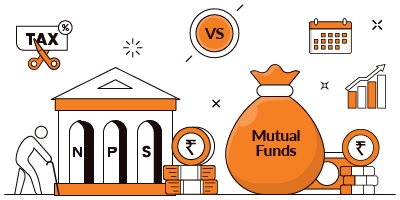Top 7 tax saving investments
7 tax saving investments: While taxpayers race to finish their tax preparation for the fiscal year ending March 31, 2022, we have attempted to make things easier for them by providing information on the top tax savers. The following ten tax-saving (Top 7 tax saving investments) instruments have been graded on eight essential parameters: returns, safety, flexibility, liquidity, costs, transparency, ease of investing, and income taxability, with equal weightage given to each.
Traditional life insurance plans score last, whereas ELSS funds (Top 7 tax saving investments) are the obvious victor at number one. Here are the top ten tax-saving options to help you decide which is best for you.
1.ELSS mutual funds

ELSS funds perform admirably across the board. They offer the potential for big returns, are transparent about where they invest, and have extremely low expenses. Furthermore, investors benefit from a relatively short lock-in period and the ability to stop at any time. However, due to stock market volatility, ELSS funds can be hazardous, which suits long-term investors who use the SIP approach. However, the SIP window has closed for those who must demonstrate documentation of Sec 80C tax-saving (Top 7 tax saving investments)investments within the next several days. So, instead of investing a significant sum in ELSS funds all at once, we recommend spreading the investment out into 2-3 tranches before the March 31 deadline.
2.NPS

The first 60% of the corpus removed at retirement is tax-free. Younger investors can now devote up to 75% of their portfolio to stocks. Older participants can continue to participate in the programme after retiring until the age of 70 and delay their withdrawals. However, investors should not anticipate NPS to provide particularly high returns in the short to medium term. Bond yields are beginning to increase and might skyrocket if interest rates are raised. In this case, NPS investments may not provide extremely appealing returns.
Also Read :- Mutual Fund Review: Should You Invest in Quant MF’s Healthcare Fund?
However, its tax advantages are unparalleled. NPS can help you save tax in three ways: contributions of up to Rs 1.5 lakh can be claimed as a deduction under Sec 80C; contributions of up to Rs 1.5 lakh can be claimed as a deduction under Sec 80D; and contributions of There is an extra deduction of up to Rs 50,000 under Sec 80CCD(1b); if the employer contributes up to 10% of the individual’s basic salary to NPS, that sum is not taxable.
3.Ulips

Ulips are a powerful rebalancing tool that may meet a variety of financial demands at the same time. They outperform ELSS funds and are more adaptable since investors may convert from equities to debt (or vice versa) based on their market reading. Furthermore, because Ulips income is tax free, there are no tax ramifications on the gains gained from such moving. A Ulip, on the other hand, may not be able to provide you with the necessary life insurance. Furthermore, it is a long-term investment, and you must stick with it for the entire time or risk losing liquidity. Be wary of asset advisers that try to missell Ulips to you, especially around the tax-saving deadline.
4. Senior Citizens’ Saving Scheme

SCSS is the best investment option for those above 60, especially after the additional tax exemption for interest up to Rs 50,000. The scheme beats PPF in terms of interest. Even 5-year tax-saving FDs, which fetch higher returns than regular FDs can’t rival SCSS. However, the eligibility is restricted to senior citizens. Further, the overall investment limit is Rs 15 lakh per individual. In some cases, where the investor has opted for voluntary retirement and has not taken up another job, the minimum age is relaxed to 58 years. There is also no age bar for defence personnel.
5.PPF

PPF yields a modest interest rate of 7.1% despite its good ratings for safety, flexibility, and taxability. While bond yields are expected to climb, this may not translate into higher rates for modest savings plans. According to experts, the interest given on modest savings programmes is unnecessarily high and should differ by at least 30-50 basis points. The PPF is superior than fixed deposits since it is tax-free. The programme has a 15-year term from the first investment, which can be extended in five-year increments at maturity.
6.National Savings Certificate

NSCs now offer rates that are only marginally higher than those offered by banks on their tax-saving FDs. But the big benefit is that NSCs are government backed. The returns are also assured and there’s a short 5-year lock-in, unlike in the PPF. Also, you don’t need to make a multi-year commitment as in case of insurance plans. Interest earned on the NSC is also eligible for deduction under Section 80C in subsequent years.
7.Tax-saving fixed deposits

Interest rates on tax-saving FDs are low, but interest taxes reduce them even further. Due to the fact that interest is completely taxed, the after-tax rate for investors in the 30% tax band is less than 5%. Endowment insurance policies provide something similar. Tax-saving FDs are ideal for people who have put off tax preparation and are looking for last-minute investment opportunities. Even if his bank has closed for the day or the investor needs to leave town, he may readily start this FD using Net banking.
